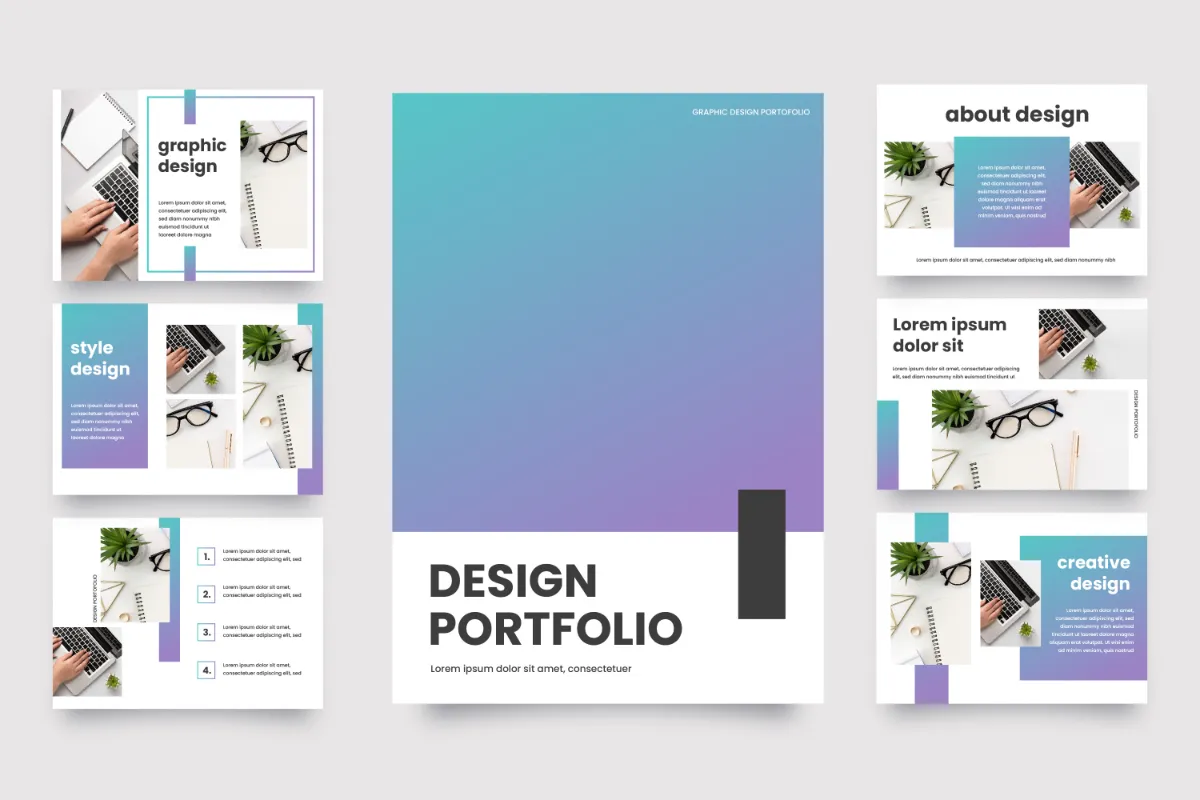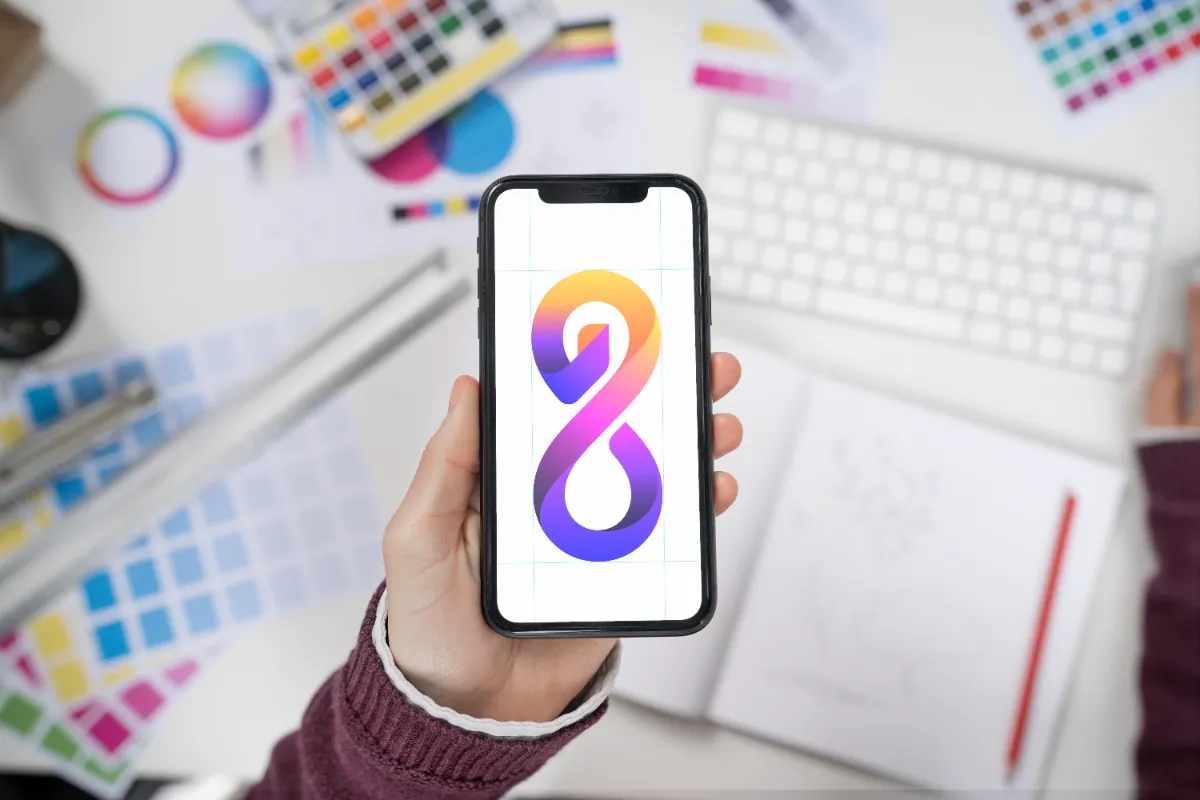Every business is vying for attention in 2025’s fast-paced digital landscape. Consumers want to connect with brands that are emotionally and visually appealing, so having a good product or service is no longer enough. At this point, graphic design for visual identity becomes essential. A brand’s visual identity ensures that it is not only recognisable but also trusted. Today’s marketplace thrives on consistent design across digital platforms, in contrast to traditional marketing, which frequently depended on word-of-mouth or physical visibility. Your design decisions have an impact on how people view your company, whether it’s through your website, mobile application, or social media profile.
Investing in visual identity is now essential for long-term growth for both small and large businesses. This blog will discuss the definition of visual identity, its importance, and how professional portfolios and mobile-first branding enhance credibility in 2025.
What is Visual Identity Graphic Design?
Visual identity The visual components that convey a brand’s personality, message, and values are referred to as graphic design. It encompasses the entire ecosystem of visual representation—colours, typography, icons, and imagery that combine to create a unified identity—as opposed to logos or individual design elements. Customers should be able to identify the company right away when they see these components.

Consider some of the most powerful brands in the world. Nike’s striking swoosh logo and Apple’s elegant white minimalism. Each of these instances exemplifies a carefully considered identity that is about telling a story rather than just being aesthetically pleasing. By investing in visual identity, a company builds an emotional connection between its clients and its goods, guaranteeing recurring business.
Why Visual Identity Graphic Design Matters in 2025
Because consumers are inundated with conflicting messages, visual identity is more important than ever in 2025. Standing out requires a visual approach that speaks instantly. A coherent and skilfully designed identity:
Builds Recognition: Your company becomes memorable when clients see your logo or colour scheme on a regular basis.
Establishes Trust: Consumers have more faith in brands that appear polished, professional, and consistent across all platforms.
Enhances Conversions: From advertisements to websites, visually strong branding leads to higher click-through and purchase rates.
Enhances Emotional Bond: Design expresses emotions that words cannot.
Businesses can make sure that their investment in design results in expansion and client loyalty by being aware of these factors.
The Role of Mobile Graphic Design
Nowadays, before making any purchases, the majority of customers engage with brands on their smartphones. This indicates that perceptions are significantly shaped by mobile graphic design. You run the risk of losing credibility if your typography is incomprehensible on mobile apps or if your logo appears hazy on small screens.
The goal of mobile graphic design is to produce images that are scalable, responsive, and screen-size-optimized. Every component, from social media posts to app icons, needs to be distinct and consistent. No matter where customers interact with your brand, a mobile-first identity guarantees that it feels polished.
Companies that use mobile graphic design frequently see improved conversion rates, easier navigation, and increased engagement. Ignoring mobile optimisation puts a brand at risk of lagging behind rivals who offer flawless experiences.
Key Elements of Visual Identity
Businesses should concentrate on a few interrelated components in order to create a strong identity:
Logo: The primary emblem of your company that conveys individuality.
Typography: Fonts that convey tone and professionalism.
Colour Palette: A colour palette is a predetermined collection of colours that are used consistently.
Images and Icons: Pictures, illustrations, and icons that reflect the values of the brand.
Consistency: Applying all visual components consistently across all touchpoints is known as consistency.
You can build a solid foundation for your brand identity in offline and online settings by becoming proficient with these components.
Graphic Design Portfolios and Their Importance
It takes strategy to create a strong identity, not just good design. Companies must first identify their personality, target market, and values. Design decisions become simpler once these are understood. For instance, a family-run bakery might select warm hues and whimsical fonts, while a contemporary tech company might use futuristic typography and muted colours.

Research and strategy should always be the first steps in the process, followed by expert execution. Starting with straightforward, standardised design principles can help even small businesses with tight budgets. As the brand develops over time, identity can be improved and broadened.
Trends in Visual Identity Graphic Design for 2025
Every year, the design landscape changes, and in 2025, a few trends will control how companies create their identities:
bold typography combined with minimalist layouts.
AI-powered design for more individualised and rapid iterations.
sustainable themes and eco-inspired tones.
For immersive experiences, use interactive visuals and motion graphics.
branding that prioritises mobile devices to guarantee clarity across all screens.
These patterns demonstrate how identity design changes with new technologies, cultural norms, and customer expectations.
Challenges Businesses Face in Visual Identity
Mobile graphic design shouldn’t be neglected because mobile devices make up the majority of global traffic. Companies that put an emphasis on scalable typography, touch-friendly icons, and responsive logos set themselves up for success. Your images will always remain clear, even on the smallest screens, if your brand is mobile-first.

For accessibility, mobile-first design is also essential. All users can interact with your brand thanks to inclusive design choices like colour contrasts for readability. This expands your clientele and fortifies your brand.
Conclusion
Businesses cannot afford to ignore visual identity graphic design by 2025. A powerful identity increases audience recognition, fosters trust, and forges deep connections. In both domestic and international markets, brands establish authority and credibility when combined with mobile graphic design and bolstered by graphic design portfolios.
In the digital age, a company that lacks a strong visual identity runs the risk of being invisible. However, companies that make design investments are creating brands that engender enduring loyalty in addition to drawing attention.
Ready to take your branding to the next level? Contact Fast Digital 360 today for expert design and digital marketing solutions.
Frequently Asked Questions (FAQs)
Q1: What is visual identity graphic design?
A: Visual identity graphic design is the use of logos, colors, fonts, and imagery to create a consistent look that represents a brand across digital and print platforms.
Q2: Why is mobile graphic design important in 2025?
A: Mobile graphic design ensures that your brand visuals—logos, typography, and icons—look clear and accessible on smartphones, which now account for most global traffic.
Q3: How do graphic design portfolios help businesses?
A: Graphic design portfolios showcase past projects, mockups, and case studies that prove a designer’s or agency’s ability to create consistent, professional branding.
Q4: What are the key elements of a strong visual identity?
A: The main elements include a logo, typography, color palette, imagery, and consistent use across all platforms.
Q5: How often should a business update its visual identity?
A: Brands should refresh their visual identity every 3–5 years, or sooner if their design feels outdated or inconsistent with modern tre




